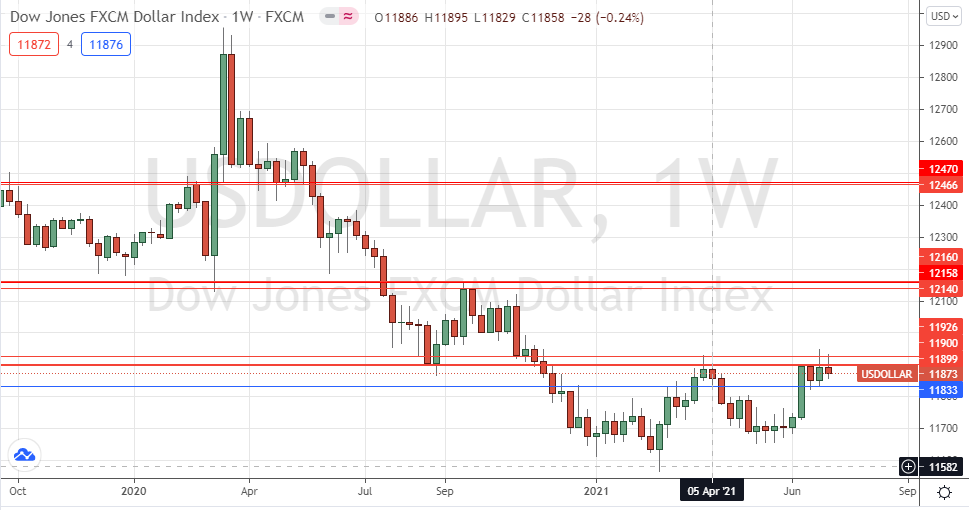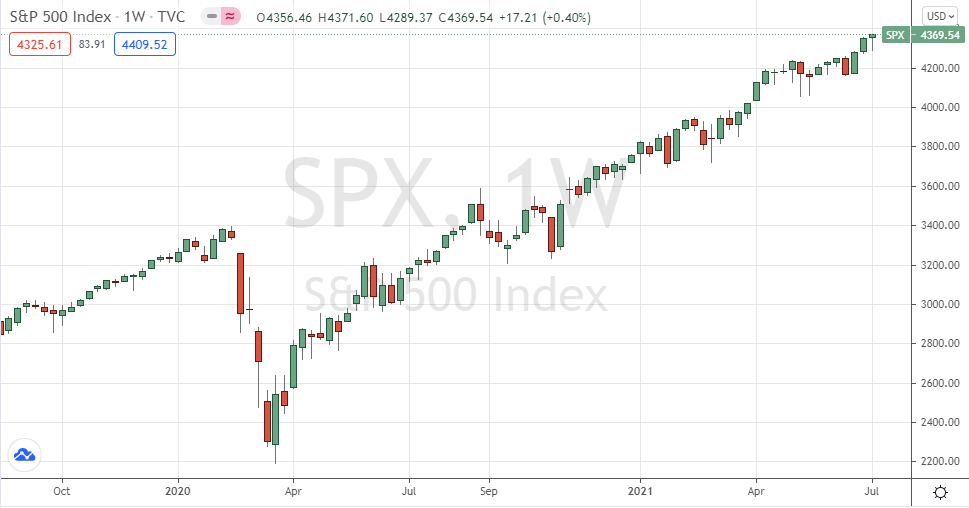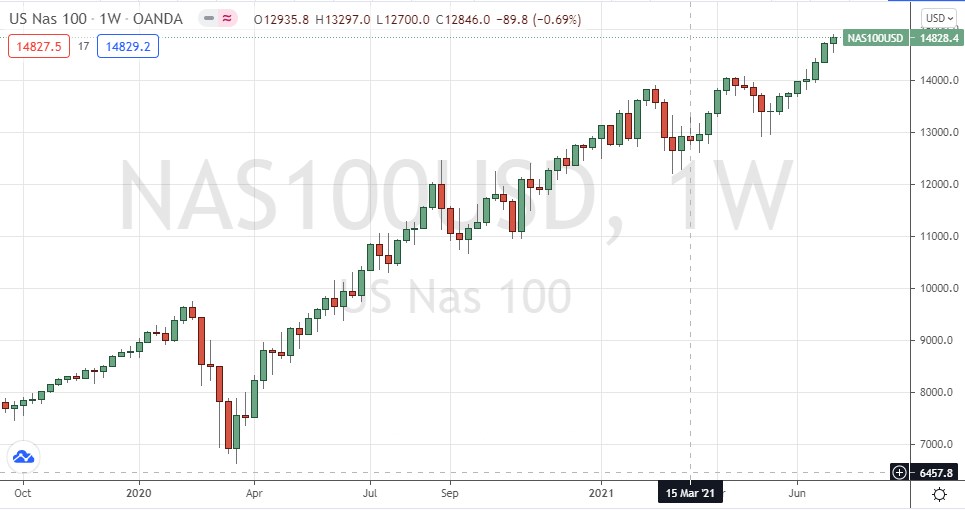The difference between success and failure in Forex trading is very likely to depend mostly upon which currency pairs you choose to trade each week and in which direction, and not on the exact trading methods you might use to determine trade entries and exits.
When starting the trading week, it is a good idea to look at the big picture of what is developing in the market as a whole and how such developments and affected by macro fundamentals and market sentiment.
There are almost no long-term strong valid trends left in the market, excepting the U.S. stock market which is continuing to make new record highs.
Big Picture 11th July 2021
Last week’s Forex market saw the strongest rise in the relative value of the Japanese yen and the strongest fall in the relative value of the Canadian dollar.
I wrote in my previous piece last week that the best trades were likely to be as being long of the S&P 500 Index and WTI Crude Oil. Unfortunately, although the S&P 500 Index rose by 0.30%, WTI Crude Oil fell by 0.57%. This produced an averaged loss of 0.14%.
Fundamental Analysis & Market Sentiment
The headline takeaway from last week was that the Federal Reserve’s most recent meeting minutes showed that the FOMC members are preparing to bring forward a “tapering” of their QE (asset purchase) program. In simple terms, this means they will start to artificially prop up the market less and less, after doing it for years. However, despite this, we saw the U.S. stock market as represented by the broach benchmark S&P 500 Index close at a new record high, while crude oil also remained bullish despite a dip. European stock markets are close to their highs, while global stock markets are tending to be less bullish. In the Forex market, the U.S. dollar lost a little ground, in a market that saw little movement by major currencies over the week.
Last week also saw the monthly policy release from the Reserve Bank of Australia, which contained no surprises except for the smallest hint that the next rate hike would happen earlier than had been expected, and better than expected Canadian jobs data. The RBA release had little effect on the AUD, although the CAD strengthened after the release last Friday.
Next week will bring a busier data schedule, starting with a release of US inflation (CPI) data, the RBNZ rate statement, the monthly policy release from the Bank of Canada, New Zealand inflation (CPI), and a few other points. The Forex market is therefore likely to be more active next week.
Last week saw the global number of confirmed new coronavirus cases and deaths rise for the third consecutive week after falling for two months, suggesting that the spread of the more highly infectious Delta (Indian) variant is having a real impact on global numbers even though approximately 25.1% of the global population has by now received at least one vaccination.
Excepting extremely small nations, the fastest progress towards herd immunity has taken place in 29 countries which have each inoculated more than 63% of their respective populations. Immunization is now proceeding more quickly in the European Union than it is in the U.S. although the U.S. is ahead of the E.U. with 55% of its population having received at least one shot of a vaccine, while the E.U. has vaccinated 54% of its population. A few nations have begun vaccinating older children to reach a “herd immunity” against the Delta variant, which is believed to require the inoculation of at least 80% of the entire population – this level has only been achieved in Gibraltar and Malta, although both are still recording a few new cases.
The strongest growth in new confirmed coronavirus cases right now is happening in Algeria, Bangladesh, Belarus, Burma, Cambodia, Cuba, Cyprus, Fiji, Finland, Greece, Guatemala, Indonesia, Iran, Iraq, South Korea, Laos, Luxembourg, Malaysia, Mexico, Morocco, Netherlands, Pakistan, Panama, Portugal, Russia, Senegal, South Africa, Spain, Tunisia, Uzbekistan, Vietnam, and the U.K.
Technical Analysis
U.S. Dollar Index
The weekly price chart below shows the U.S. Dollar Index printed a bearish inside candlestick last week. It should also be noted that the price action was again unable to break above the nearby resistance levels, and that the candle closed within the bottom half of its range. The index is above its levels from both three and six months ago which shows a long-term bullish trend is still in force. Overall, next week’s price movement in the U.S. dollar looks more likely to be downwards than upwards despite the trend, provided that the resistance levels at 11899 and 11926 continue to hold the price down. This suggests that trades short of the USD against other currencies are most likely to be appropriate over this coming week, unless the coming week sees a close in this index above 11926, which would be a very bullish sign.
S&P 500 Index
The S&P 500 Index printed a relatively small but strong bullish candlestick which closed right at the top of its weekly range at an all-time high price. These are simply very bullish signs which indicate a further rise next week is more likely than not to happen. Since the coronavirus crash of 2020, this major U.S. equity index has almost doubled, which is an excellent return over barely fifteen months. The S&P 500 Index remains a buy.
NASDAQ 100 Index
The NASDAQ 100 Index printed a relatively small but strong bullish candlestick which closed right at the top of its weekly range at an all-time high price. These are simply very bullish signs which indicate a further rise next week is more likely than not to happen. Since the coronavirus crash of 2020, this major U.S. tech equity index has more than doubled, which is an unbelievably excellent return over barely fifteen months. The NASDAQ 100 Index remains a buy in my view.
Bottom Line
I see the best opportunity in the financial markets this week as being long of the S&P 500 Index. The Forex market is best approached by waiting for more interesting technical developments before entering any new trades there.




